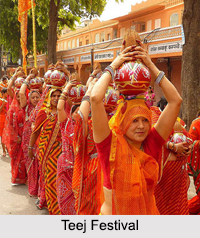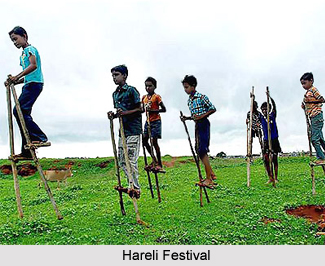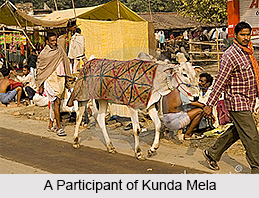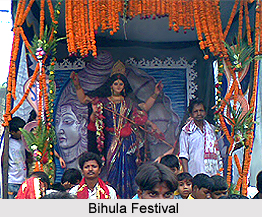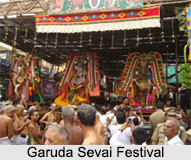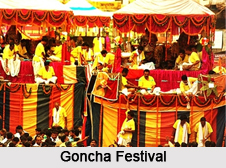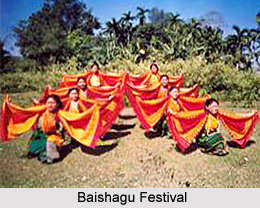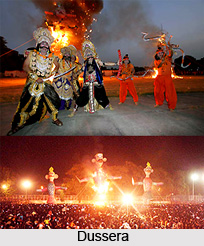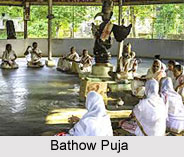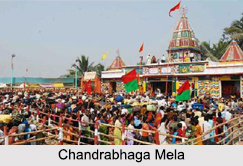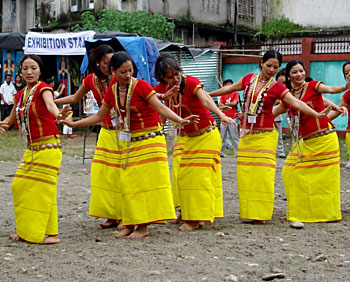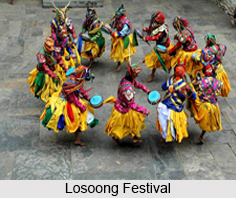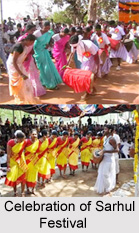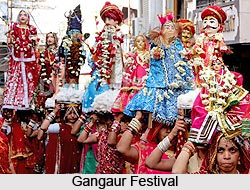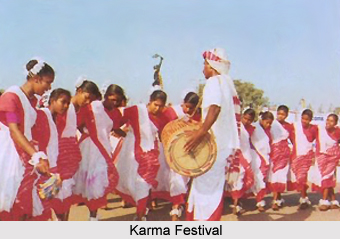 The festivals of Jain are characterized by renunciation, austerities, study of the Holy Scriptures, repetition of holy hymns, meditation, and expressing devotion for the Paramatma or Lord.
The festivals of Jain are characterized by renunciation, austerities, study of the Holy Scriptures, repetition of holy hymns, meditation, and expressing devotion for the Paramatma or Lord.
Rituals of Jains
Jain rituals are also significant for the people who are caught in the meshes of ordinary life. These people can also perform the rituals according to their ability and conveniences and become free from the corporeal entanglements. Renunciation and austerity constitute the very foundation of the Jain Dharma. Jainism has a very rich life of rites and festivals. They have a profound significance on the performer. There are different types of Jain festivals that are celebrated throughout the year. Some of the festivals of Jains are Mahavir Jayanti, Paryusana Parva, New Year, Paush Dashami, Gyan Panchami, Akshay Tritiya Tapa and Navapad Oli.
Mahavir Jayanti
Mahavir Jayanti is celebrated as the birth anniversary of Mahavira, the 24th Tirthankara. The festival is observed in a quiet manner with prayers, visiting of sacred places and by worship of Jain Tirthankaras. Jains gather in temples to hear readings of the teachings of Lord Mahavira. The event holds special significance in Gujarat and Rajasthan due to the ancient shrines at Girnar and Palitana in Gujarat. Mahavir Jayanti is also celebrated at Parasnath Temple in Kolkata and at Pawapuri in Bihar.
Paryushan Mahaparva
Paryushan Mahaparva is a festival of eight days. During this period many Jains fast and carry out the religious activities. The festival is celebrated in the months of Sravana and Bhadra i.e. August or September. During the rainy season the Jain monks settle down in a particular location and are invited to a town in the vicinity.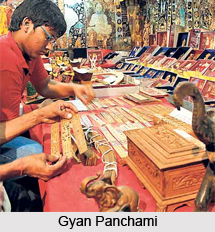
Jain New Year
Jain New Year begins from the next day of Diwali. It is an occasion for joyful gatherings of Jains, where all wish each other a happy and prosperous New Year.
Gyan Panchami
Gyan Panchami falls on the fifth day of the New Year. It is regarded as the day of knowledge. On this day the Holy Scriptures, which impart knowledge to the people, are worshipped with devotion.
Paush Dashami
This day is celebrated as the birthday of Lord Parshvanath, the 23rd Jain Tirthankara. On the 10th day of Posh month of Hindu calendar, thousands of Jain men and women perform the meditation. Fasting is done for 3 days and by means of recitation and meditation they try to achieve divine welfare. A grand fair is organised in Sankheswar which is a sacred place for the Jains.
Akshay Tritiya Tapa
People who perform the austerity of Varshi tapa complete the austerity on this day by consuming sugar-cane juice in the cool shadow of Shatrunjay. Akshay Tritiya Tapa is celebrated on the 3rd day of the bright fortnight of Vaishakh month of Hindu calendar. Bhagwan Rishabh Dev, the First Jain Tirthankara performed the Parana i.e. completion of an austerity on this particular day after fasting for 13 months and 13 days continuously. It is very auspicious for making a pilgrimage to Shatrunjay (Palitana) on this day.
Maun-Agiyaras
Maun-Agiyaras falls in the month of November to December. On this day total silence and fasting is observed and meditation is directed towards the five holy beings, monk, teacher, religious leader, arhat and siddha. This day is regarded as the birth anniversary of many of the Tiirthankaras.
Navapad Oli
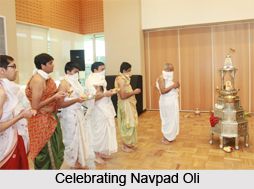 This festival involves the customs of fasting and undertaking other religious practices on many auspicious days throughout the year. As many as ten days in a given month are observed for the fasts by the pious Jains. However, others may observe a lesser number days of fasting. The first day of the three seasons in the Indian year is also regarded as holy. The nine-day Oli period of semi-fasting is observed twice a year that falls in March/April and September to October. During this period the Jains take only one meal a day and consume plain food.
This festival involves the customs of fasting and undertaking other religious practices on many auspicious days throughout the year. As many as ten days in a given month are observed for the fasts by the pious Jains. However, others may observe a lesser number days of fasting. The first day of the three seasons in the Indian year is also regarded as holy. The nine-day Oli period of semi-fasting is observed twice a year that falls in March/April and September to October. During this period the Jains take only one meal a day and consume plain food.
Snatra Mahotsav
Snatra Mahotsav is performed usually every day, in most Jain temples. This ceremony comprises of paying oblations to the image of the Lord. It involves worshipping the Lord with various auspicious things and making offerings. It also includes worshipping the Lord with songs, music and dances. Showing devotion to the Lord and seeking his blessings constitutes an aspect of the very foundation of the Jain dharma.
Yaksha Puja
Yaksha Puja is an important Jain Festival in which the images of Jins, Yakshas and Yakshinis are worshipped. These Jins have achieved nirvana. Thus the devotees worship and observe the ceremony to receive inspiration to become like them.
Atthai Mahotsav
This is a festival of eight days hence it is called Atthai Mahotsav. Many devotional and religious activities are performed in the Jain temples during these eight days or sometimes five days. The ceremony includes activities like cleaning and decorating the temples, offering prayers to Lord in accompaniment of songs, music and dances. Chanting of hymns in praise of the god recitation of songs and decorating the images also form an important part of the ceremony.
Bhai Beej
This is similar to Bhai Phota of West Bengal. When Raja Nandivardhan, the brother of Shraman Bhagawan Mahavira was steeped in sorrow and anguish on account of Nirvan his sister, Sudarshana took him to her house and comforted him. This happened on the second day of the fortnight of the waxing moon, in Kartika month. This day is observed as Bhai Beej.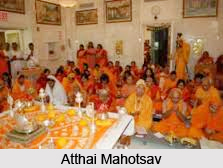
Ashadh Chaturdasi
Ashadh Chaturdasi is the sacred commencement of Chaturmas. It takes place on the 14th day of the fortnight of the waxing moon, in the month of Ashad. The Jain Sadhus and Sadhvis remain where they happen to be on that day until the 14th day of Kartik Shukla. They have to stay there. During these four months. Among the Jains, many austerities like renunciation, tapasya, undertaking of religious ceremonies, etc., are organized. Even in respect of eating and drinking during these days, some rules have been prescribed.
Maun Ekadashi
Maun Ekadashi falls on the 11th day of the fort-night of the waxing moon in the month of Margshirsh. This is an important day for Jains on which they observe total silence-Maun and carry out such austerities as Paushadh vrat, fasting, worshipping of gods, meditation etc. This is the day on which the great events relating to the one hundred and fifty Jineswaras are celebrated by means of holy recitation.
Paush dashami
Paush dashami is famous as the birthday of Bhagwan Parshwanath. On the 10th day of Pushya, hundreds and thousands of Jain men and women perform the tapasya of 3 Upavasattham (continuous fasting for 3 days) and by means of recitation and meditation they try to attain spiritual welfare.
